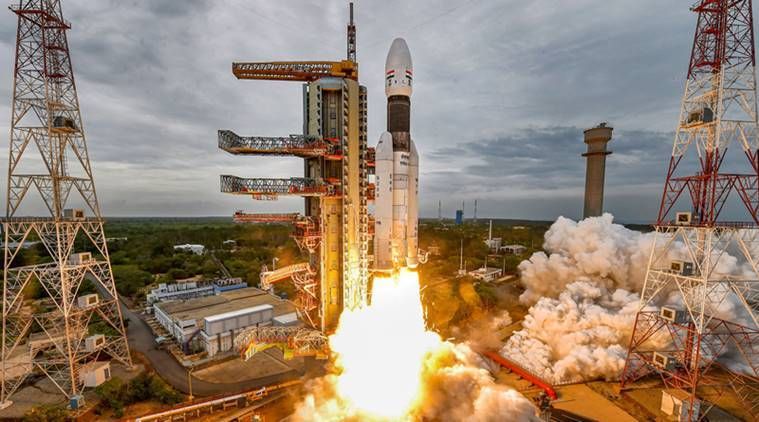India's 2nd Moon Mission:Chandrayaan 2
Jul 23, 2019 • 36 views
On 22nd july 2019 India successfully launched its 2nd moon mission i.e chandrayaan 2. Earlier it was scheduled on 14 th of july but due to some technical errors this mission was called-off but on 22nd again ISRO created a new history with the launch of Chandrayan 2.
Will we get water on moon? This question always arises in our minds and we think how is it even possible as when sun's rays fall on the surface of moon's surface the temperature on its surface reached 125 degree celcius and at this temp water can not exist. But some scientists belive that they can find water in the craters of moon where sunlight cannot reach and to solve this mystery chandrayaan 1 was sent on moon.
Chandrayaan-1
Chandrayaan 1 was launched in 2008 with the mission to find water on moon. This mission was also carried out ISRO and this mission was a huge success. The chandrayaan-1 mission proved that there are possibilities of finding water on moon. This mission detected water molecules on the moon. After this mission, the scientists have estimated that 1.3 trillion pounds of ice might exist in the shadows of craters of moon. Later NASA also carried out its LRO mission which found that a crater named Shackelton has 22% of its land covered with ice.

Chandrayaan-2
Till date, the missions conducted on the moon's south pole like chandrayaan 1 and LRO, all these were orbiter missions that means they orbited around moon and while orbiting they used to do the analysis of moon's surface. But this time Chandrayaan-2 is quite different from these earlier missions. The unique feature of chandrayaan-2 is that it will be first mission to actually a rover on moon's surface. This mission has three parts: First-Orbiter , Second-Lander(vikram) and Third-Rover(pragyaan). The rover will come out of the lander and go onto the moon for analysis and the orbiter will revolve around the moon for its analysis.
ISRO has said that if everything goes well then the lander will touch the moon's surface on 6th of september 2019.
The main mission of chandrayaan-2 it to analyze the south pole of moon and create a 3D map of that part and also analyze the moon's surface and find minerals availabe there and analyze the presence of ice on moon's surface.

Conclusion
The study of these things can help us to get idea about how solar system was originated and also it will give us idea about how moon was formation and evolution of moon. This mission of finding water on moon will also help us to setup colonies on moon for space stations and other research purposes. So lets hope everything goes well and ISRO succeeds in its Chandrayaan-2 mission.
